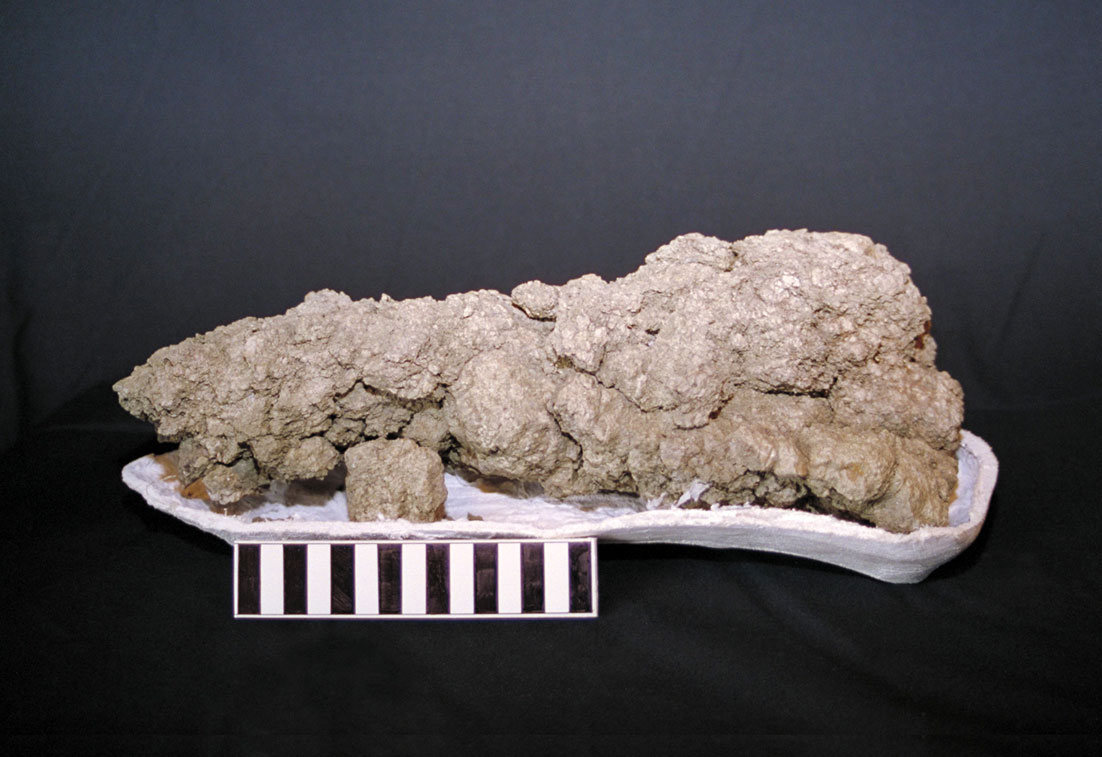Leftovers / Dung-Stones and DNA
A world of shit
Rob DeSalle
“Leftovers” is a column that investigates the cultural significance of detritus.
The study of feces by humans is an age-old endeavor. Aristotle wrote about it, and almost certainly all ancient civilizations drew some knowledge from looking at their stool. Perhaps the modern age of scientific inquiry into animal waste begins with Antony van Leeuwenhoek, the inventor of the microscope. He examined his own shit under a microscope he built himself, and discovered that tiny animalcules (his term) were swimming in it. (Leeuwenhoek also examined human semen, most likely not his own, but that is another story.) It wasn’t until the early 19th century, however, that a formalized study arose amongst scientists when, of all things, dinosaur dung became the rage.
A segment of fossilized feces is known as a coprolite. The word literally means “dung-stone” (kopros + lithikos), and no Greek term could be more descriptive. Coined by Dr. William Buckland in 1823, it first appeared in print in 1829 in his report on fossil pterodactyls (extinct flying creatures closely related to dinosaurs) read to the Geological Society of London. Buckland was the first to realize that certain fossils were indeed the feces of organisms, an insight that earned him the epithets “learned and indefatigable.” J. E. DeKay, the first American to mention the existence of coprolites, did so in the Annals of the Lyceum of Natural History of New York, a popular science journal of the time.
The oldest and biggest coprolites currently known, found in what is now Utah, date from the Jurassic Period. Here, 205 million years ago, a very large meat-eating dinosaur took a dump. The preservation of the resulting fossils, in red-brown mudstone, is so exquisite that scientists have been able to deduce that the dinosaur “defecated first, then … walked forward to release smaller amounts of feces.”[1] The largest fossil from this “defecation event” is about five feet long and two feet wide, and is tapered at both ends, a typical marker of the well-preserved coprolite.

Approximately 17" x 6". Photo Timothy Tokaryk.
The scientific utility of such samples lies in their ability to tell scientists what kinds of organisms the defecators were eating. The detail in coprolites is sometimes quite delicate, with the bone structures of small fish, for example, being a common component. This in turn allows scientists to say something about the ecology and predatory behavior of ancient creatures. Beyond such physical evidence, it is also possible to extract genetic material from coprolites. The oldest DNA that has thus far been isolated (in a widely accepted study) comes from the bones of Neanderthal humans between 30,000 and 42,000 years old. Most coprolites are much, much older than this, and DNA is not preserved in fossil records beyond a few hundred thousand years. Nevertheless, much younger coprolites do exist, and these can yield genetic secrets, not only about the defecator but also about what the defecator ate and, most importantly, about any parasites the defecator might have shed in its feces.
In a series of studies on the extinct ground sloth, for example, a group of scientists has recently been able to determine the dietary makeup of this huge mammal at two points in the near past (20,000 and 28,000 years ago). Not surprisingly, the sloths were eating whatever plants were in their range. What was surprising, however, was that the scientists could use the age of the coprolite to determine what plants were abundant at the time.[2] Ancient human dung and mummified remains have also been examined. Even before DNA techniques were developed, such specimens were of interest in the obscure field of paleoparasitology, and scientists have been able to determine the kinds of gut and colon parasites affecting ancient human populations.[3] Knowing what diseases affected these populations can help scientists in the study of contemporary diseases, because ancient disease patterns provide a baseline comparison tool.
One researcher in particular has suggested that knowing which microorganisms lived in ancient mammals can provide information about their extinction. Ross MacPhee, a curator at the American Museum of Natural History, has been involved for the past five years in a search for the microorganisms that might have caused the North American megafaunal extinction that occurred at the end of the Pleistocene Period (10,000 to 12,000 years ago). This extinction killed off nearly all of the large North American mammals present at the time, such as mammoths. His work has focused on both the frozen remains of mammals like the mammoth and on studies of feces from these beasts.
In his Parts of Animals, Aristotle suggests that “in all things of nature there is something of the marvelous.” While shit might not have been exactly what Aristotle had in mind here, it has certainly become a marvelous thing of nature that can tell us much about the past.
- D. D. Stone, E. L. Crisp, and J. R. Bishop, Abs. No. 50526, The Geological Society of America Abstracts, 2000.
- M. Hofreiter, D. Serre, H. N. Poinar, M. Kuch, and S. Paabo, Nature Reviews Genetics, 2: 353, 2001.
- O. Loreille, E. Roumat, O. Verneau, F. Bouchet, and C. Hanni, International Journal of Parasitology, 31: 1101, 2001.
Rob DeSalle is a curator in the Division of Invertebrates and the curator in charge of the Ambrose Monell Cryo Collection at New York’s American Museum of Natural History.
Spotted an error? Email us at corrections at cabinetmagazine dot org.
If you’ve enjoyed the free articles that we offer on our site, please consider subscribing to our nonprofit magazine. You get twelve online issues and unlimited access to all our archives.